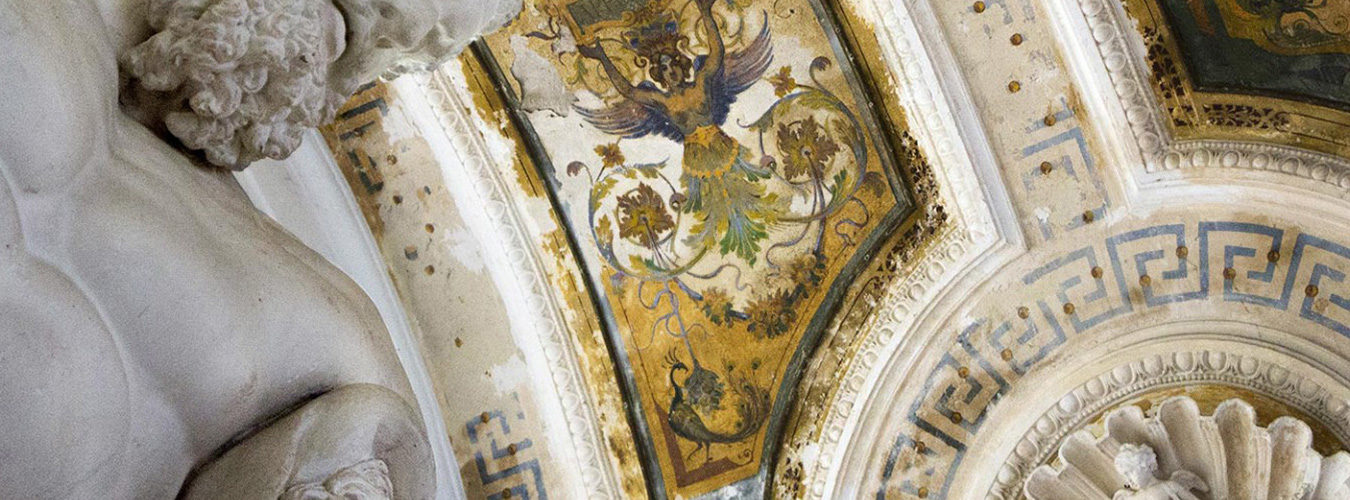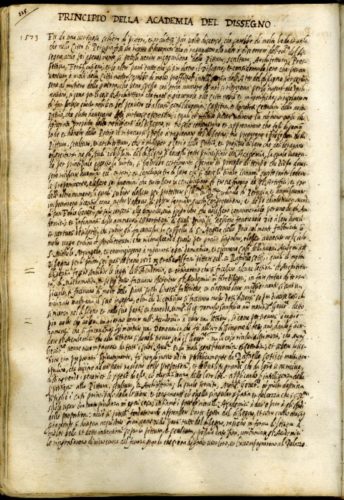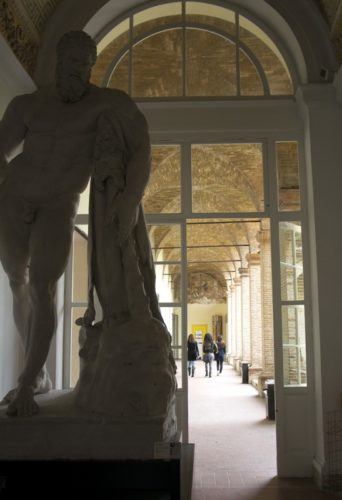Its historical importance is underlined by the dates and by the personalities who have brought this institution to life over the centuries. Its origins are very distant in time. It was founded in the spring of 1573, eleven years after the birth of the first Academy in Italy, that of Florence.
This is attested by the Principle of the Academia del Disegno, kept in manuscript form in the Augusta Library in Perugia, which describes “a virtuous group of painters and architects” led by the painter Orazio Alfani and the architect-mathematician Raffaello Sozi, who, emulating the analogous institution founded in Florence by Cosimo I de’Medici, decided to meet regularly “to talk about the excellence of drawing so that it could then easily come into the knowledge of Painting, Sculpture, Architecture, Perspective, Fortifications, and all the other parts that the Drawing carries with it”.
In 1791 the first Constitution was printed, elaborated by the director Baldassarre Orsini, a pupil of Raphael Mengs, on the Roman Academy of San Luca model, which was repeatedly renewed and strengthened. But the great modernization of the Institute was implemented around 1820 by Tommaso Minardi, a pupil of Antonio Canova, director and teacher of Painting who reorganized from a didactic and administrative point of view the Academy of Drawing neoclassically renamed Academy of Fine Arts, giving it the character of a public educational institution and flanking the school with a museum that contained examples of ancient art and a rich library, as well as establishing scholarships to give deserving young people the opportunity to perfect their skills in other Italian cities, especially in Rome.
The teaching activity in the nineteenth century was a guide and example to the arts not only in Umbria and saw notable protagonists work within it in the historical, artistic, and architectural fields, such as Baldassarre Orsini, Carlo Labruzzi, Guglielmo Calderini, and Silvestro Valeri. After several moves (first to the Alessian Oratory of Sant’Angelo della Pace in Porta Sole and then to the former Vanvitellian convent of Montemorcino Nuovo), the Academy found its definitive headquarters at the beginning of the twentieth century in the former Convent of San Francesco al Prato where it holds a historical-artistic heritage of inestimable value, in which the library stands out (comprising almost 17,000 bibliographic units), the gipsoteca (including original plaster casts made on the works of Luca Della Robbia, Michelangelo Buonarroti, and Antonio Canova), the cabinet of drawings (including among others extraordinary graphic works by Giovan Battista Piranesi and Jean-Baptiste Wicar) and the gallery of paintings (including paintings ranging from Carl Christian Vogel von Vogelstein to Alberto Burri).
At the beginning of the new century, now firmly organized, the Academy not only maintained its function by counting masters such as Pietro Angelini, Gerardo Dottori, and Arturo Checchi, but he was also able to start a special school: the School of Industrial Art, institutionally distinct even if annexed to the Academy which, in 1923, gave rise to the Institute of Art ‘Bernardino di Betto,’ stated in 1928. The Perugian Academy obtained equal status with state academies only in 1940, with royal decree of 25 June n.1086.
Inserted among the major cultural institutes of the city, it has now secured an organic administrative-didactic structure and, thanks to the funding from the Municipality and the Province of Perugia, it currently performs an important and precise function for which there is already an act of strengthening and valorization to be able to carry out the work with fruitful results.
With law 21 December 1999 n.508, the Academy acquired the status of Institution of Higher Artistic Education placed under the aegis of the Ministry of Education, University and Research and, in the application of further legislative provisions recently introduced, has the power to issue academic diplomas with first-level degree value (three-year schools in Painting, Artistic Design for business-Design, Scenography and Sculpture) and second level (two-year specialist in Visual Arts with specialization in Graphics, Painting, Scenography, Sculpture).



